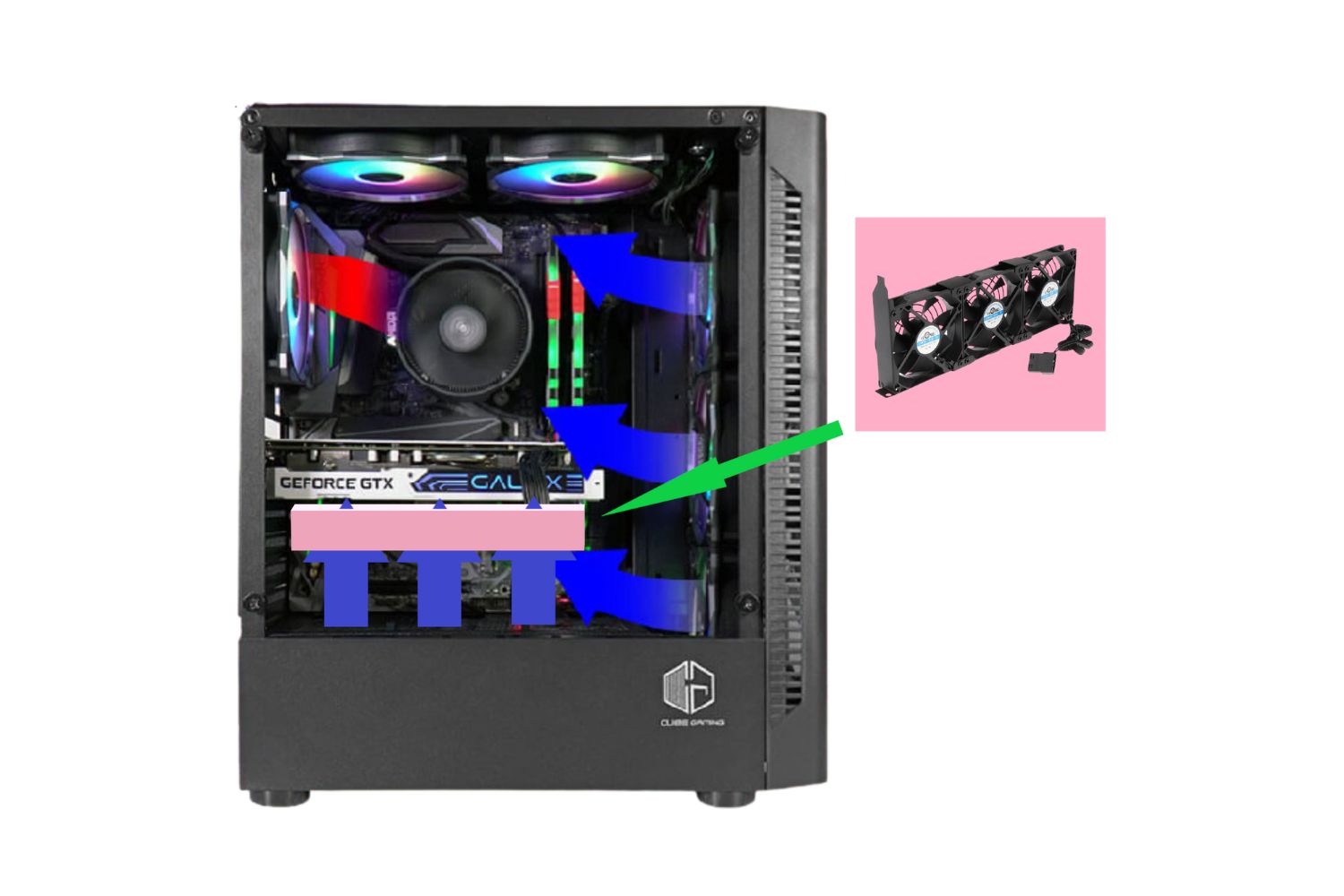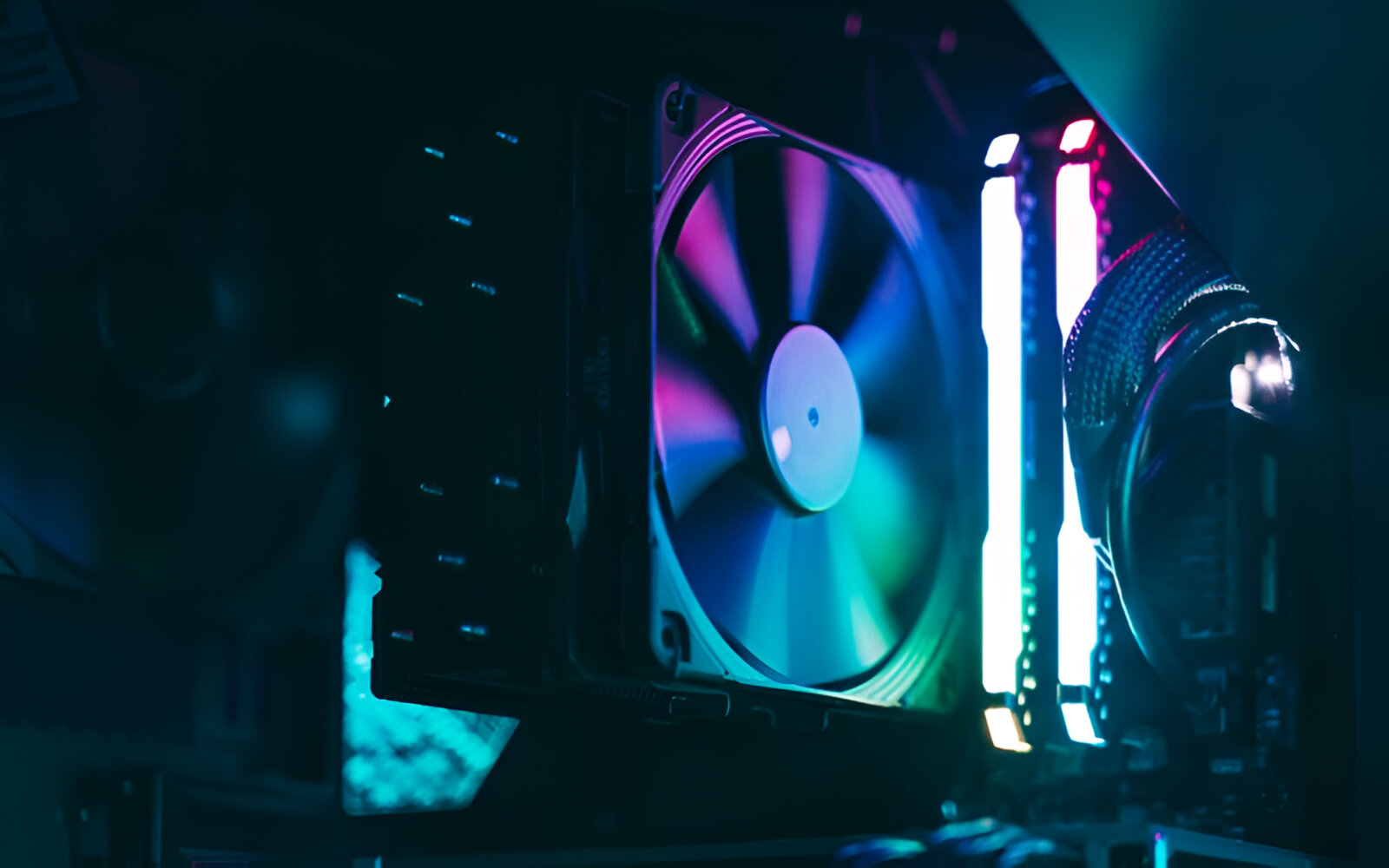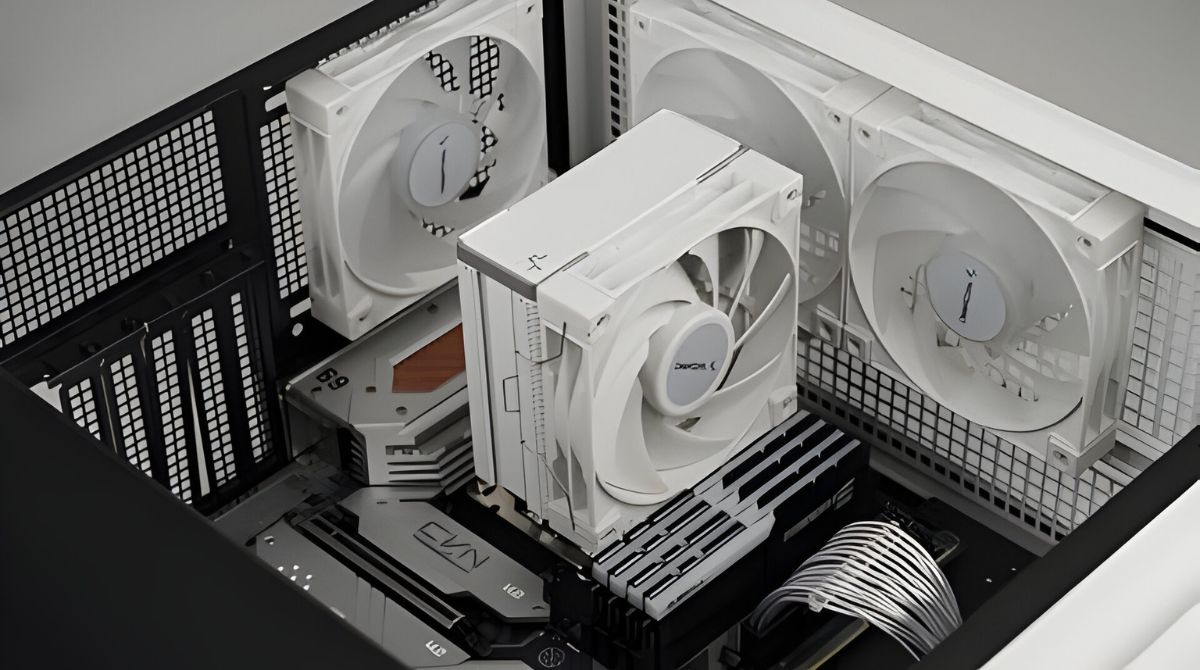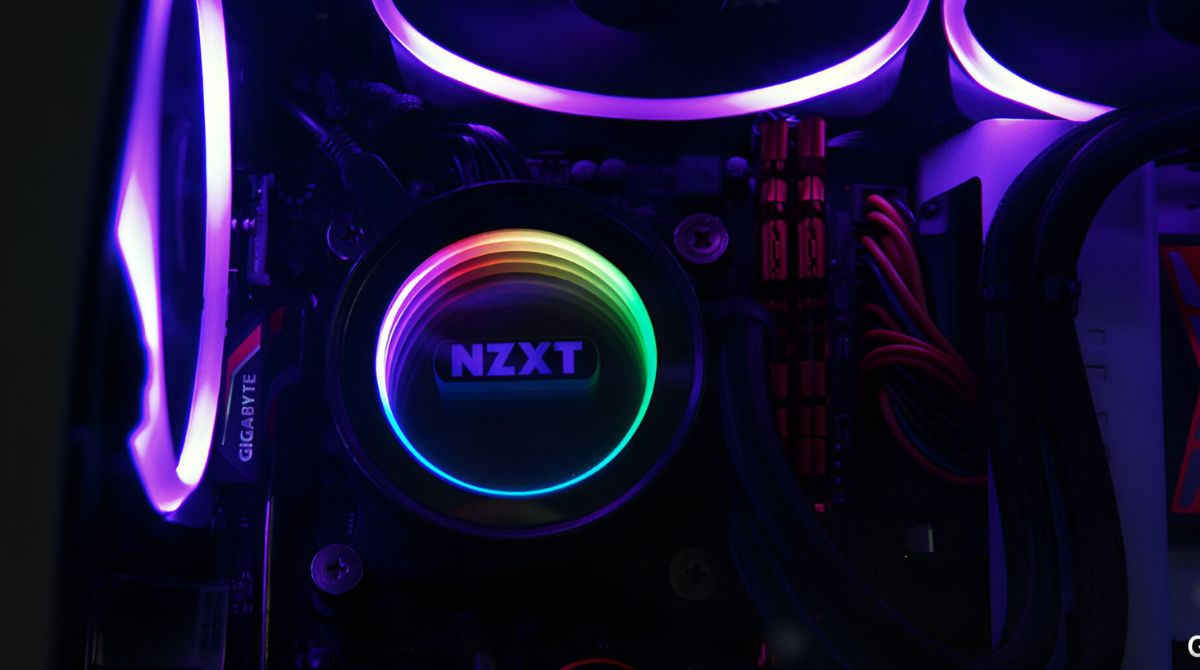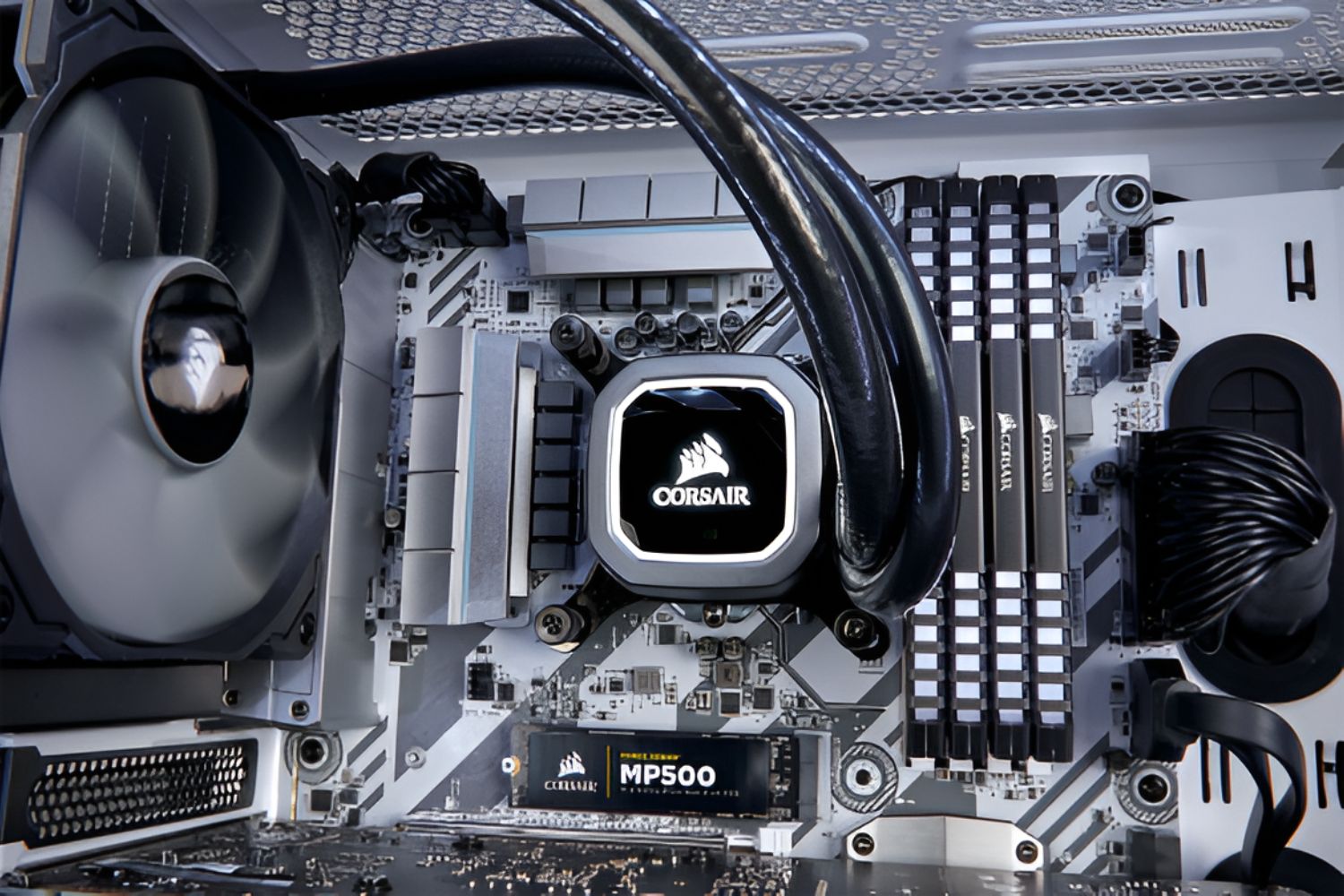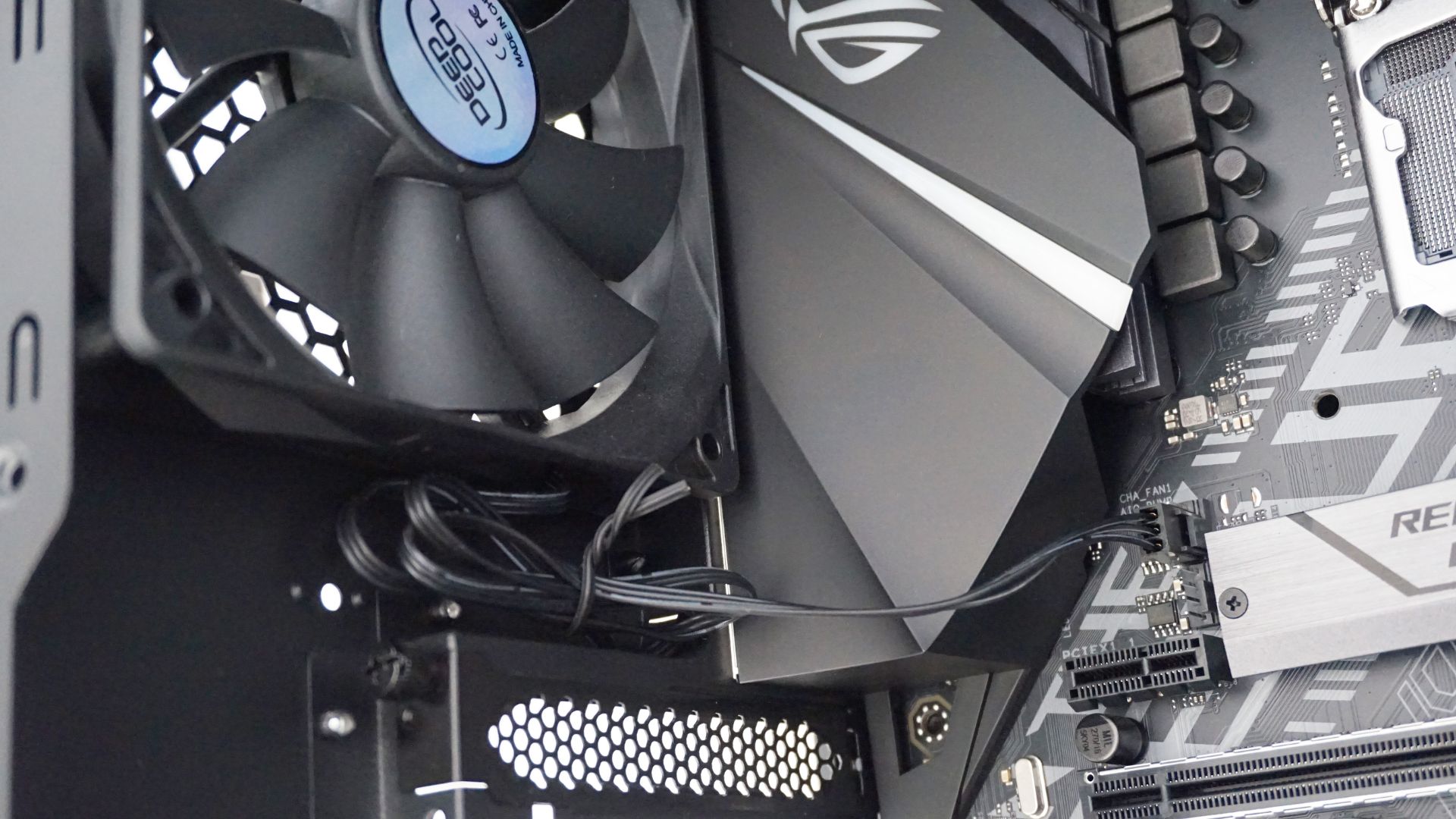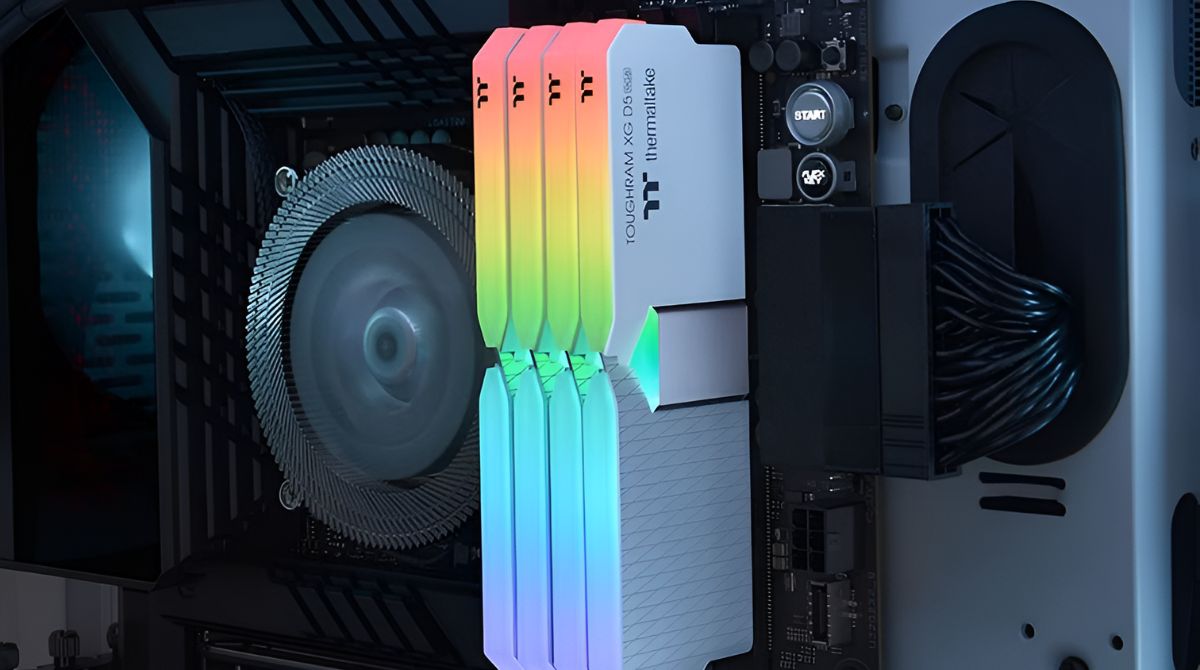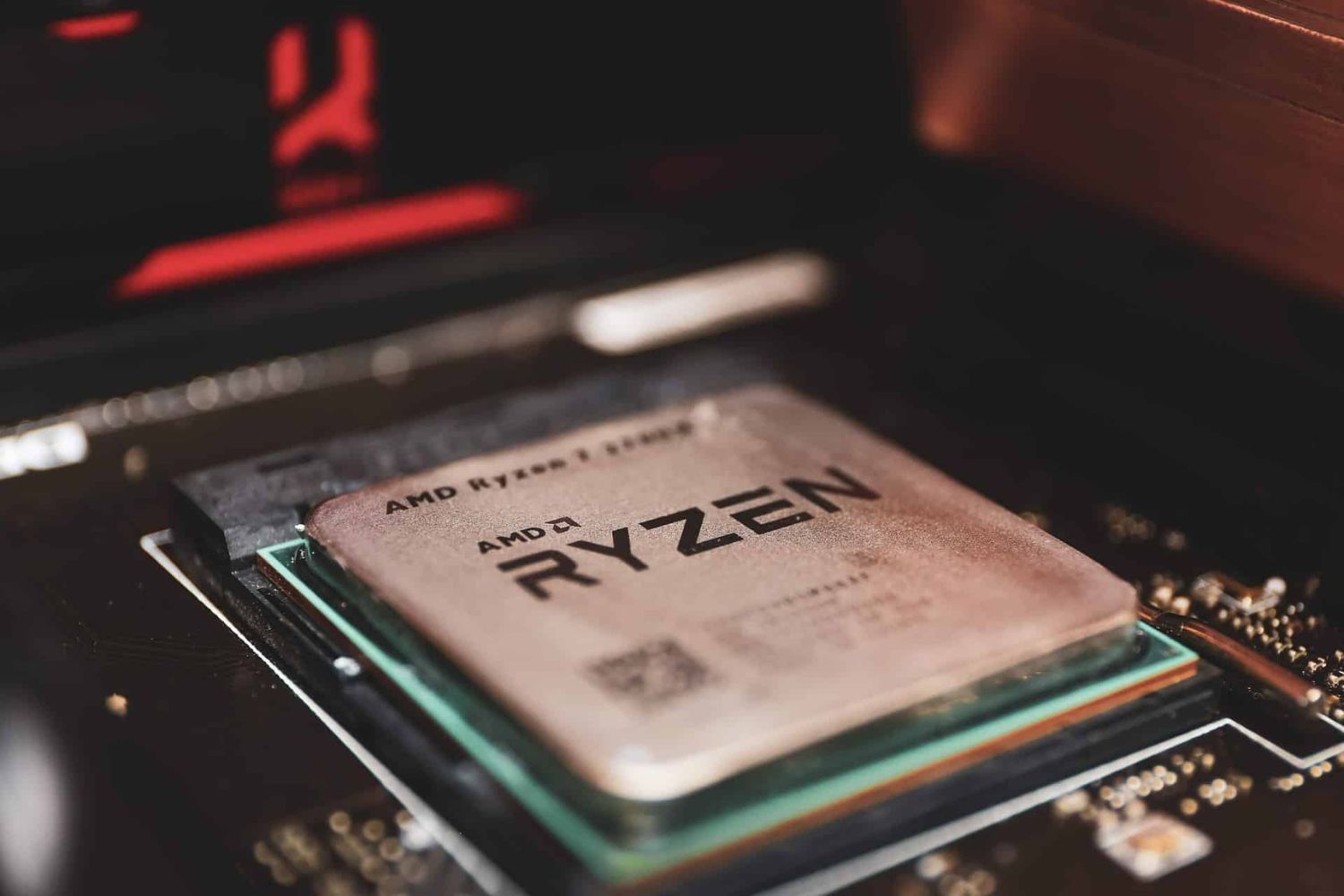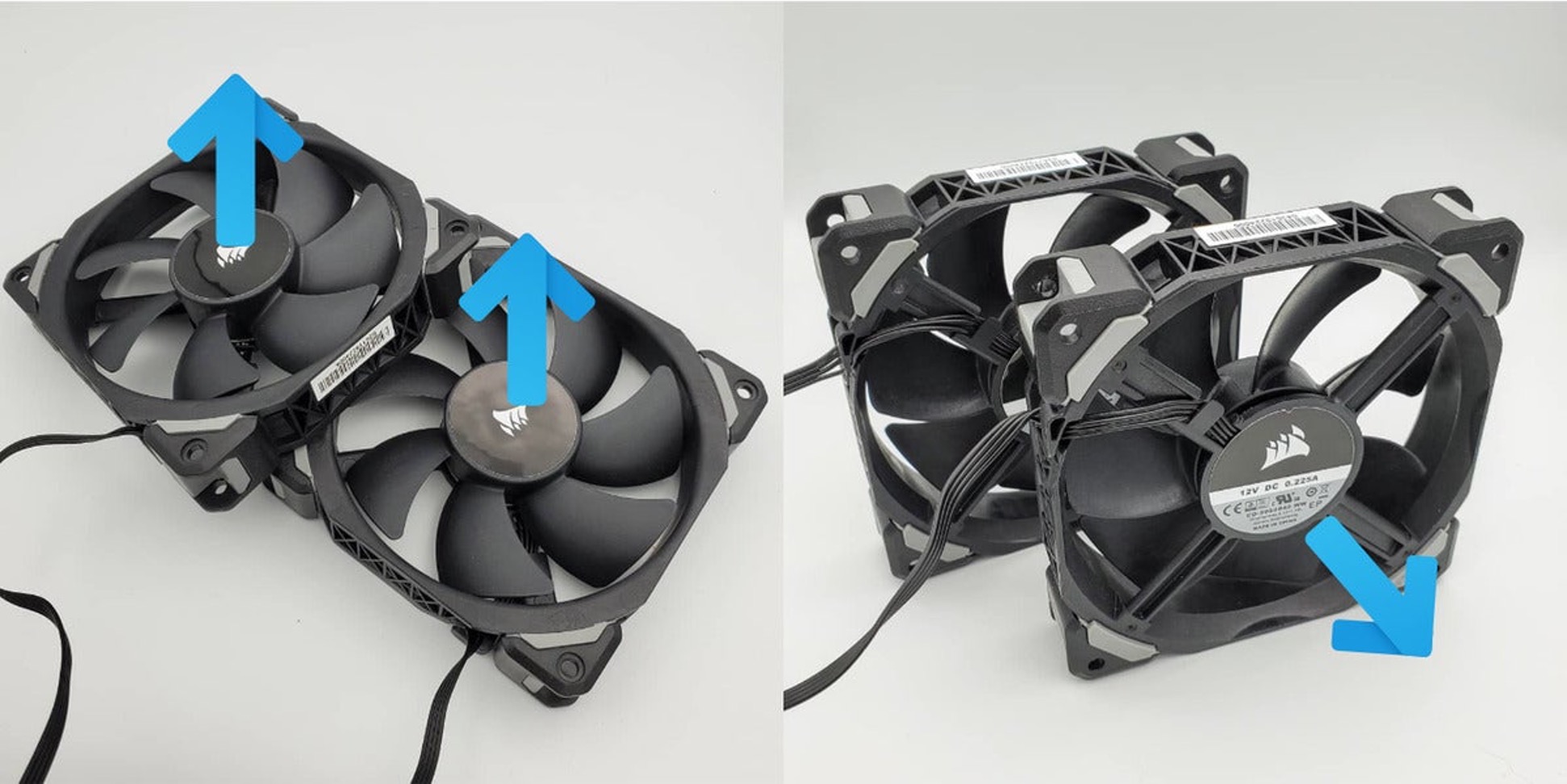Introduction
Choosing the right orientation for your CPU cooler is a crucial decision when building or upgrading your computer. The CPU cooler plays a vital role in maintaining the temperature of your processor, preventing overheating and ensuring optimal performance. However, many PC enthusiasts often overlook the importance of proper CPU cooler orientation.
So, what exactly is CPU orientation? It refers to the positioning and direction of the CPU cooler on top of the processor. There are different options available, including vertical, horizontal, and inverted orientations, each with its own advantages and considerations.
Why is the proper CPU cooler orientation so important? Well, the orientation determines the efficiency of heat dissipation from the CPU. Improper orientation can lead to increased temperatures, reduced performance, and even potential damage to your processor. On the other hand, choosing the right orientation can help maximize cooling efficiency and extend the lifespan of your CPU.
When deciding on the orientation of your CPU cooler, there are several factors you should consider. Firstly, you need to think about the layout of your computer case. Different case designs may have specific airflow patterns and limitations that can affect CPU cooler orientation. It’s crucial to ensure that the orientation doesn’t obstruct the flow of fresh air or impede the exhaust of hot air.
Another factor to consider is the type of CPU cooler you are using. Air coolers and liquid coolers have different requirements for orientation due to their varied mechanisms of heat dissipation. Additionally, the size and weight of the CPU cooler can also impact the choice of orientation.
Now, let’s explore the different CPU cooler orientations and their advantages. Understanding the benefits of each orientation will help you make an informed decision and ensure that your computer runs at optimal performance.
What is CPU Orientation?
CPU orientation refers to the positioning and alignment of the CPU cooler on top of the processor. It determines how the heat generated by the CPU is effectively dissipated and expelled from the system. The proper CPU cooler orientation is crucial for maintaining the temperature of the processor within safe limits and ensuring optimal performance.
The CPU cooler is responsible for cooling down the CPU by absorbing the heat produced during operation. It features a heatsink, which is usually made of metal, and a fan or liquid cooling system that helps dissipate the heat. An effective cooling solution is necessary to prevent the processor from overheating, which can cause instability, system crashes, and even permanent damage to the CPU.
There are several orientations to consider when installing a CPU cooler:
- Vertical Orientation: In this orientation, the CPU cooler is positioned vertically, with the heatsink fins running parallel to the motherboard. This is the most common and traditional orientation, suitable for most computer cases. It allows for natural convection as the hot air rises and is expelled through the top or rear exhaust fans.
- Horizontal Orientation: In this configuration, the CPU cooler is positioned horizontally, with the heatsink fins perpendicular to the motherboard. This orientation is often seen in small form factor cases or when space constraints require a different setup.
- Inverted Orientation: This orientation involves flipping the CPU cooler upside-down, with the fan or liquid cooling radiator positioned at the bottom. It is typically used in cases that have a top-mounted power supply or a separate compartment for the CPU cooler. The inverted orientation helps to eliminate heat buildup near the CPU and can improve overall system cooling.
The choice of CPU cooler orientation depends on various factors, including the case design, available space, airflow patterns, and personal preferences. Additionally, the type of CPU cooler being used, whether it is an air cooler or a liquid cooler, may also influence the recommended orientation.
In the following sections, we will explore the importance of proper CPU cooler orientation in more detail and discuss the benefits and considerations associated with each orientation. This knowledge will help you make an informed decision and optimize the cooling performance of your computer system.
Importance of Proper CPU Cooler Orientation
The importance of proper CPU cooler orientation cannot be overstated when it comes to maintaining the performance and longevity of your computer system. Here are some key reasons why choosing the right orientation is crucial:
Heat Dissipation: The primary function of a CPU cooler is to dissipate the heat generated by the processor. Proper orientation ensures that the maximum surface area of the cooler’s heatsink is utilized, allowing for efficient heat transfer and dissipation. Incorrect orientation can obstruct the airflow, resulting in inadequate cooling and increased CPU temperatures.
Temperature Regulation: One of the critical factors for optimal CPU performance is maintaining an appropriate operating temperature. Excessive heat can lead to thermal throttling, where the CPU automatically reduces its speed to prevent overheating. This can result in a decrease in performance and overall system responsiveness. Proper CPU cooler orientation helps to regulate the temperature by efficiently removing heat from the processor.
System Stability: Overheating can cause system instability and crashes. When temperatures exceed safe limits, the CPU and other components may experience sudden shutdowns or errors, potentially leading to data loss or hardware damage. By ensuring proper CPU cooler orientation, you can minimize the risk of overheating and maintain system stability.
Extended Lifespan: Excessive heat can significantly impact the lifespan of your CPU and other components. Prolonged exposure to high temperatures can cause accelerated wear and tear, reducing the overall longevity of your system. Properly orienting the CPU cooler helps to alleviate heat stress and extend the lifespan of your hardware.
Improved Performance: When your CPU operates at optimal temperatures, it can deliver its full potential in terms of speed and processing power. By maintaining a cooler environment, the CPU can sustain higher clock speeds and handle demanding tasks more effectively. This results in improved overall system performance and responsiveness.
Noise Reduction: A properly oriented CPU cooler can contribute to reducing system noise. When the CPU stays cooler, the fan or liquid cooling system doesn’t need to work as hard to dissipate heat, resulting in quieter operation. This can create a more pleasant computing experience, especially during tasks that require heavy CPU usage.
In summary, proper CPU cooler orientation plays a crucial role in heat dissipation, temperature regulation, system stability, component lifespan, performance improvement, and noise reduction. It is essential to carefully consider the orientation options and select the one that best suits your case design, airflow configuration, and cooling requirements.
Factors to Consider for CPU Cooler Orientation
When deciding on the orientation of your CPU cooler, there are several factors to consider to ensure optimal cooling performance and compatibility with your computer system. These factors include:
Case Layout: The design and layout of your computer case can influence CPU cooler orientation. Consider the location of the CPU socket, the available clearance space, and the position of other components such as RAM modules or graphics cards. Some cases may have specific constraints that limit the choices for CPU cooler orientation.
Airflow Patterns: Understanding the airflow patterns in your computer case is crucial for determining the best CPU cooler orientation. Identify the intake and exhaust fan locations and ensure that the chosen orientation doesn’t obstruct the natural flow of air. Proper airflow promotes efficient cooling and prevents hot air from accumulating near the CPU.
Cooler Type: Different types of CPU coolers, such as air coolers and liquid coolers, have specific requirements for orientation. Air coolers typically rely on the natural movement of air, while liquid coolers utilize fans and radiators for heat dissipation. Consult the manufacturer’s recommendations to determine the most suitable orientation for your specific cooler type.
Size and Weight: Consider the size and weight of your CPU cooler when choosing the orientation. Some coolers, especially larger models or those with elaborate cooling mechanisms, may require specific orientations to prevent strain on the motherboard or interfere with other components. Ensure that there is sufficient clearance and stability for the chosen CPU cooler orientation.
Cable Management: Proper cable management is often overlooked when considering CPU cooler orientation. Ensure that the orientation you choose doesn’t obstruct access to important cables, such as power connectors or fan headers, as this can impact the ease of installation and maintenance.
Motherboard Compatibility: Some motherboards may have specific recommendations or limitations regarding CPU cooler orientation. Check the motherboard’s documentation or manufacturer’s website for any guidelines or restrictions that may affect your choice of orientation.
Heat Sink Orientation: When installing a CPU cooler with a heat sink, consider the orientation of the heat sink fins. Aligning the fins with the airflow direction, whether that’s from front to back or bottom to top, can help optimize heat dissipation. This ensures that the hot air is efficiently expelled from the system.
By carefully considering these factors, you can make an informed decision about the CPU cooler orientation that best suits your case, component compatibility, and cooling requirements. It is essential to strike a balance between maximum cooling effectiveness and compatibility with your specific setup.
Vertical CPU Cooler Orientation
The vertical CPU cooler orientation is the most common and traditional setup for cooling the CPU. In this configuration, the CPU cooler is positioned vertically with the heatsink fins running parallel to the motherboard. Here are the key advantages and considerations of using a vertical CPU cooler orientation:
Advantages:
- Simplicity and Compatibility: The vertical orientation is compatible with most computer cases and motherboard layouts, making it a hassle-free choice for many PC builders.
- Natural Convection: The vertical orientation allows for natural convection, where the hot air rises and is expelled through the top or rear exhaust fans. This enables efficient heat dissipation and helps maintain lower CPU temperatures.
- Component Clearance: The vertical orientation often provides ample clearance for other components, such as RAM modules or graphics cards. This can be beneficial in cases with limited space.
Considerations:
- Airflow Obstruction: Depending on the specific case design, the vertical CPU cooler orientation may obstruct the airflow from the front intake fans to the rear exhaust fans. This can result in reduced overall system cooling effectiveness.
- Large CPU Coolers: Some larger CPU coolers may extend beyond the height of the case, making them incompatible with the vertical orientation. Ensure that your chosen CPU cooler fits within the height restrictions of your case.
- RAM Clearance: In some cases, the vertical orientation may limit the clearance between the CPU socket and the nearest RAM slot. This can impact the compatibility of taller RAM modules with larger heat spreaders.
The vertical CPU cooler orientation is a reliable and widely used option for cooling the processor. It provides simplicity, compatibility, and efficient heat dissipation through natural convection. However, it’s important to consider potential airflow obstructions and component clearance limitations when opting for this orientation.
Horizontal CPU Cooler Orientation
The horizontal CPU cooler orientation involves positioning the CPU cooler horizontally, with the heatsink fins perpendicular to the motherboard. This orientation is often used in small form factor cases or when space constraints require a different setup. Let’s explore the advantages and considerations of using a horizontal CPU cooler orientation:
Advantages:
- Suitable for Low-Profile Cases: The horizontal orientation is ideal for low-profile cases with limited vertical space. It allows for efficient cooling while ensuring compatibility with the case’s height restrictions.
- Improved Component Clearance: In some cases, the horizontal orientation provides better clearance for other components, such as RAM modules or graphics cards. This can be advantageous in compact builds where space is at a premium.
- Direct Heat Dissipation: With the heatsink fins aligned horizontally, the hot air is expelled directly towards the rear exhaust fan. This can enhance heat dissipation and help maintain lower CPU temperatures.
Considerations:
- Restricted Airflow: The horizontal orientation may hinder the natural convection of hot air rising from the CPU cooler. This can lead to suboptimal cooling as the hot air may not be efficiently expelled from the system. It is important to ensure adequate airflow through the use of additional case fans.
- RAM Clearance: Depending on the specific CPU cooler design and motherboard layout, the horizontal orientation may limit the clearance between the CPU socket and the nearest RAM slots. This can affect the compatibility of taller RAM modules with larger heat spreaders.
- Weight Distribution: Some larger CPU coolers can be heavier and may potentially strain the motherboard when positioned horizontally. It is crucial to ensure that the case and motherboard can support the weight of the CPU cooler in this orientation.
The horizontal CPU cooler orientation is a viable option when vertical space is limited or when building in small form factor cases. It provides improved component clearance and direct heat dissipation. However, it is essential to address the considerations of restricted airflow, RAM clearance, and weight distribution to ensure optimal cooling performance and compatibility with your specific system configuration.
Inverted CPU Cooler Orientation
The inverted CPU cooler orientation involves flipping the CPU cooler upside-down, with the fan or liquid cooling radiator positioned at the bottom. This orientation is typically used in cases that have a top-mounted power supply or a separate compartment for the CPU cooler. Let’s explore the advantages and considerations of using an inverted CPU cooler orientation:
Advantages:
- Improved GPU Cooling: In an inverted orientation, the CPU cooler’s fan or radiator is positioned at the bottom, which helps direct airflow towards the graphics card. This can aid in cooling the GPU and reducing its temperatures during intense gaming or GPU-intensive tasks.
- Reduced Heat Buildup: By positioning the CPU cooler upside-down, heat buildup near the CPU socket is minimized. This can help maintain lower CPU temperatures, especially for processors that generate substantial heat.
- Efficient Airflow Separation: In cases with a separate compartment for the CPU cooler, the inverted orientation ensures a clear separation of the CPU cooler’s airflow from other components, such as the power supply. This prevents the recirculation of hot air and contributes to better cooling efficiency.
Considerations:
- Case Compatibility: The inverted CPU cooler orientation is dependent on the case design. Ensure that your case supports this orientation and provides the necessary positioning for the CPU cooler’s fans or radiator at the bottom.
- Cable Management: The inverted orientation may require careful consideration of cable management. Ensure that the cables, particularly those connected to the CPU cooler and other peripherals, do not obstruct the airflow or interfere with the functioning of the cooler.
- Manufacturer Recommendations: Some CPU coolers may have specific recommendations or limitations regarding the inverted orientation. Refer to the manufacturer’s documentation to ensure that the chosen CPU cooler is compatible with this orientation.
The inverted CPU cooler orientation offers several advantages, such as improved GPU cooling, reduced heat buildup near the CPU, and efficient airflow separation. However, it is crucial to consider case compatibility, cable management, and manufacturer recommendations to ensure proper installation and optimal cooling performance. If your case supports this orientation and you desire enhanced GPU cooling or reduced CPU temperatures, the inverted CPU cooler orientation can be a viable option for your system.
Recommended CPU Cooler Orientations for Specific Cases
Choosing the right CPU cooler orientation is not only dependent on the type of cooler and the components involved but also on the specific case you are using. Different case designs have unique airflow patterns and restrictions that can influence the optimal orientation for CPU coolers. Here are some recommended CPU cooler orientations for specific cases:
Mid-Tower ATX Cases:
In mid-tower ATX cases, which are the most common case form factor, the vertical CPU cooler orientation is often recommended. These cases typically offer ample space for vertical CPU coolers and have standard airflow configurations, providing optimal heat dissipation and compatibility.
Small Form Factor Cases:
Small form factor cases, such as Mini-ITX or Micro-ATX cases, have limited space and unique airflow considerations. In these cases, the horizontal CPU cooler orientation is commonly advised. It helps ensure compatibility with the case’s restricted height and allows for better component clearance, especially when using larger CPU coolers.
Open-Air Test Benches:
Open-air test benches are specially designed for system testing and benchmarking purposes. With no case cover or panels, they offer plenty of flexibility in CPU cooler orientation. In this scenario, any orientation that allows for proper cooling and airflow, such as vertical or horizontal, can be considered depending on the specific cooler design and system configuration.
Inverted ATX Cases:
Inverted ATX cases, where the motherboard is mounted upside-down, often benefit from the inverted CPU cooler orientation. This allows for more efficient heat dissipation and improved GPU cooling, as the hot air is directed towards the bottom of the case. The lower compartment in these cases also provides better separation of airflow, reducing the recirculation of hot air from the CPU cooler.
Custom Water-Cooled Loops:
For systems with custom water-cooled loops, the CPU cooler orientation depends on the specific radiator and mounting configuration. The recommended orientation is typically based on the manufacturer’s guidelines and compatibility with the case, ensuring proper cooling performance and efficient heat dissipation.
It’s important to note that these recommendations are general guidelines, and individual case designs and specific cooler models may have their own compatibility requirements. Always refer to the case and cooler manufacturer’s guidelines for the most accurate information regarding CPU cooler orientation.
By considering the unique characteristics of your specific case, you can make an informed decision about the most suitable CPU cooler orientation. This will help ensure optimized cooling performance, component compatibility, and efficient airflow management within your computer system.
Conclusion
Proper CPU cooler orientation is a crucial consideration when building or upgrading your computer system. Choosing the right orientation can significantly impact the cooling performance, system stability, and overall lifespan of your CPU. By understanding the advantages and considerations of different orientations, you can make an informed decision that suits your case design, component compatibility, and cooling requirements.
The vertical CPU cooler orientation is the most common and compatible option, providing natural convection and ease of installation. It is suitable for most cases and offers efficient heat dissipation. The horizontal CPU cooler orientation is ideal for cases with limited vertical space, offering improved component clearance and direct heat dissipation. However, it may require additional airflow management to prevent restricted cooling. The inverted CPU cooler orientation is recommended for cases with a separate compartment or top-mounted power supply, promoting improved GPU cooling and reduced CPU temperatures.
Factors such as case layout, airflow patterns, cooler type, size and weight, cable management, motherboard compatibility, and heat sink orientation should be considered when determining the best CPU cooler orientation for your system. Additionally, specific case recommendations should also be taken into account based on the form factor and design.
Remember to consult the manufacturer’s guidelines for your case and CPU cooler to ensure compatibility and optimal performance. By carefully considering these factors and recommendations, you can select the most suitable CPU cooler orientation that maximizes cooling efficiency, minimizes CPU temperatures, and promotes the longevity and stable operation of your computer system.







